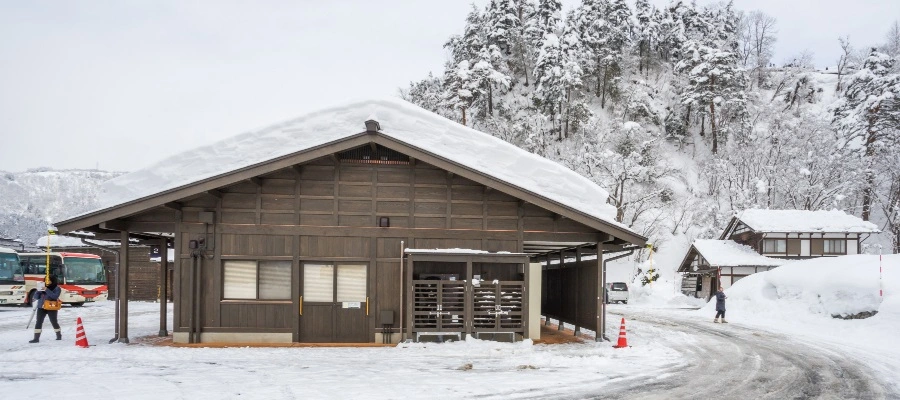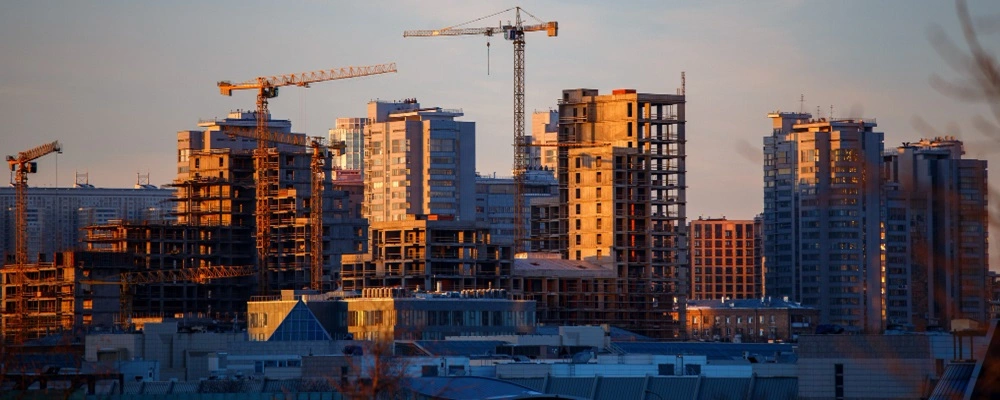Any building or structure must withstand various forces throughout its lifespan. These forces are regarded as loads, and when they are applied to a structure or any of its parts, the loads cause the structure to shift and become stressed. In general, three types of loads may be found on structures: longitudinal, horizontal, and vertical, or gravity loads. These loads are used in the structure’s analysis and design. Hence, the understanding of the various types of loads that are placed on buildings is so essential.
Hence, in this blog, Brick & Bolt discusses the different types of loads, from dead loads to live loads, wind loads to snow loads, imposed on structures or buildings.
10 Different Types of Load on Structures
The loads in structures and buildings can be categorized as longitudinal loads, horizontal loads, and vertical loads. There are three types of vertical loads: live load, dead load, and snow load. The two types of horizontal loads are seismic load or earthquake load and wind load. Precise calculation of the different loads operating is required. Different design loads for buildings and structures are specified by the American Standard Code ASCE 7: Minimum Design Loads for Buildings and Other Structures and the Indian standard code IS 875 (Part 1): 1987 (Reaffirmed 2008). Below is a discussion of each of them.
- Vertical Loads
- Live Load or Imposed Load
- Dead Load
- Snow Load
- Horizontal Loads
- Wind Load
- Earthquake Load
- Special Loads
- Load Combinations
- Accidental Load
- Thermal Load
- Settlement Load
- Soil and Fluid Load
Let’s explore all the types of loads in detail:
1. Live Load or Imposed Load
A load that is subject to vary over time is referred to as a “live load” or “ imposed load” in civil engineering. The load’s weight fluctuates or changes position while people are moving through a structure, for example. Anything in a building that is movable and not attached to the structure may result in a live load. The calculation of a structure’s gravity load takes live loads into account. The anticipated maximum load serves as the basis for the minimum live-load criteria. A live load may be described as operating on a concentrated region (point load) or as a uniformly distributed load (UDL). At some point, it could be taken into account while calculating gravitational loads.
2. Dead Load
Dead loads, often referred to as permanent or static loads, are those that don’t change much over time. Examples of these include the weight of the structural components of a structure, such as the beams, walls, roof, and structural flooring. Immovable fixtures, built-in cabinets, and permanent non-structural barriers are examples of dead loads. The weight of the structure or other permanent components makes up the dead loads, which are calculated before any live loads. The total loading applied to the structure is the sum of the live and dead loads. Each structure’s dead loads are determined by multiplying the unit material weight by the volume of each segment.
3. Snow Load

This is the weight that snow buildup may impose, and it is especially concerning in areas where snowfall can be severe and frequent. Large amounts of snow may build up and place a significant strain on a building. One significant aspect influencing the amount of snowfall is the design of a roof. The code IS 875 (Part-4):1987 addresses snow loads on building roofs. The weight of snow is dependent on many factors, such as temperature variations, distribution and accumulation, and moisture content.
4. Wind Load
Analysis requires knowledge of both structures, meteorology and aerodynamics. Wind loads may be imposed by the movement of air relative to a structure. While wind load may not be a major worry for large, low-level, or small structures, it becomes more relevant with height, when lighter materials are used, and when designs that might alter airflow—typically roof forms—are used. It could be necessary to add additional supports and fasteners when a structure’s dead weight is inadequate to withstand wind stresses. In structural design, wind load must be taken into account, particularly if the building’s height is more than twice the dimensions measured longitudinal to the exposed wind surface.
5. Earthquake Load
The inertia force created in the building by earthquake vibrations causes an earthquake load. Earthquake load depends on variables like seismic activity hazards, structure parameters, and gravity load. The force of inertia changes with mass. Because of the structure’s higher weight, there will be a greater seismic loading. The structure will break down or sustain damage when the moment of resistance provided by the element is exceeded by the earthquake load. The weight or mass of the building, its dynamic characteristics, the variation in stiffness between adjacent floors, the severity and length of the earthquake, and other factors all affect how much an earthquake loads a structure. A neighboring building or the surface of a structure on the ground is subject to an earthquake load. Structures in seismically active places must be carefully analyzed and planned to make sure they won’t collapse in the event of an earthquake.
6. Load Combination
When many different types of loads operate on the structure, a load combination is created. Building codes often provide a range of load combinations along with load factors, or weightings, for every kind of load to guarantee structural integrity under various maximum anticipated loading situations. The following load combinations are described in the standard code:
- DL+IL,
- DL+WL,
- DL+IL+EL,
- DL+IL+TL and more.
Where DL- Dead Load, IL- Imposed Load or Live Load, WL- Wind Load, EL- Earthquake Load, TL- Temperature Load)
7. Accidental Loads
Human activity causes accidental loads, which include crashes, explosions, and fires. Dropped items from cranes or trucks, broken cranes, and other things are all examples of impacts and accidents. In short, impact loads are rapid loads that are put on a structure for a short time compared to other loads that are imposed on a structure. Impact loads are created when heavy objects fall from heights or when live loads, like moving cranes, cars, or machinery, vibrate. When they act on structure parts, they put more stress on them than when the same amount of force is delivered slowly. There are two kinds of impact loads: vertical and horizontal.
8. Thermal Load
These loads are caused by the expansion or contraction of the materials as a result of temperature changes, and they have the potential to apply considerable stresses to a structure.
9. Settlement Load
The term “settlement load” refers to the phenomenon that takes place when one section of a structure settles more gradually than other sections.
10. Soil and Fluid Load
There is an excessive flow of water in the soil, which affects the density of the soil. This is the cause of the soil and fluid load.
In conclusion, paying attention to various types of structural loads that will be applied to the building is always necessary. This is because the loads and the effect they have have a direct link to the safety features of the structure. Anyone who does not want to make any compromises about the safety factor is required to have an understanding of the varied loads that the building is subjected to throughout its existence. Hence, it’s recommended that you hire a skilled team of professionals like Brick & Bolt Hyderabad to evaluate the different types of load that will be imposed on your structure and give you a strong and long-lasting structural design according to your house floor plan design.

